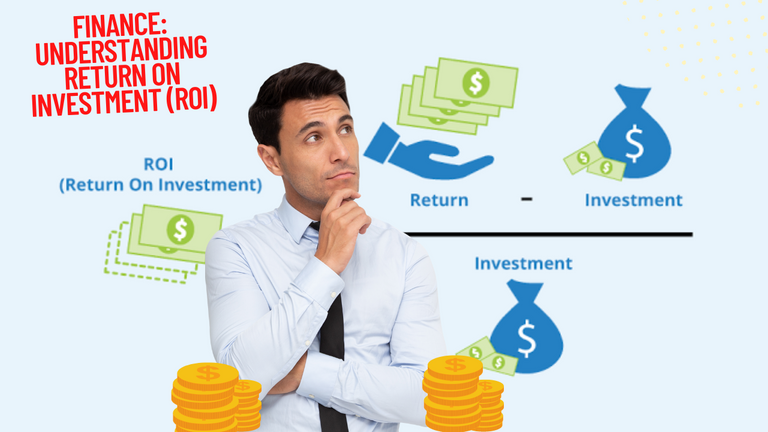Understanding Return on Investment (ROI)

canvas design
You should always evaluate your performance, whether you're a long-term investor, businessperson, swing trader, or day trader. Without this, how would you know if you were succeeding? One of the major advantages of investing or trading is that you can accurately assess your performance using objective criteria. By doing this, emotional and cognitive biases can be significantly reduced.
How then can this be useful? The human mind, in trying to make sense of the universe, has a tendency to create stories around everything. You cannot, however, "hide" from numbers. Your strategy needs to be altered if you're generating negative returns. Similar to this, if you believe that you are doing well but the statistics don't support this, you are likely a victim of your biases.
However, as someone who has been trained in the area of finance, I have discussed and shared with you what ROI is and how you can be able to calculate ROI in whatever businesses or investments you're doing.
WHAT IS RETURN ON INVESTMENT (ROI)?
One thing that investors or business people usually look at first before they finally agree to business terms and conditions is the kind of ROI they can get from the business. The performance of an investment can be gauged using the return on investment (ROI). It can also be used to contrast various investment options.
Return on Investment (ROI) is a well-known profitability metric that used to evaluate how well an investment has performed. In a nutshell, it is the profit that is generated from an investment that is greater than the expenses. We'll discuss a few of the various methods of calculating returns on investment in this post, as we said earlier.
For the time being, it's sufficient to know that ROI calculates profits or losses in relation to the initial investment. In other words, it provides a rough estimate of the profitability of an investment. A positive return on investment (ROI) indicates gains in relation to the initial investment, whereas a negative return on investment (ROI) indicates losses.
ROI calculations are applicable to all types of business transactions, be it cryptocurrency investment, the purchase of houses, cars, land, and so on. Moreover, ROI can be used to assess the outcomes of previous deals. Consider purchasing a house for $200,000 as an example. After that, you spend $50,000 on it and use it for two years. Consider a scenario in which the house value rises, and you can now sell it for $300,000.
Your house gave you two years of enjoyment in addition to a large return on an investment. What exactly would that cost? Let's investigate how to know the amount of profit we can get after enjoying the house for just 2 years.
The formula for return on investment (ROI)
The ROI calculation is pretty easy. The original investment cost is subtracted from the investment's current value. Then, multiply this amount by the investment's initial cost.
ROI is equal to the initial cost divided by the current value.
ROI = Initial Cost / The Current Value
How much money could you expect to make when you sell the house you have used for two years?
ROI = (300,000 - 200,000) / 200,000 = 0.5
You have a 0.5 ROI. It can be multiplied by 100 to determine the rate of return (ROR).
0.5 x 100 = 50
This indicates that your return on investment was 50%. To get the complete picture, you must consider how much money was spent on the vehicle. So, let's deduct it from the present value of the house.
300,000 - 50,000 = 250,000
Now that the costs have been taken into consideration, you may compute the ROI:
ROI = (250,000 - 200,000) / 200,000 = 0.25
25%, or 0.25, is your ROI. This means that we may calculate the net profit, which is $50,000, by multiplying your cost of investment ($200,000) by your ROI (0.25).
$200,000 x 0.25% = $50,000.
So, my good friend, that is how return on investment (ROI) can be calculated as done above.
CONCLUSION
In this post, we've discussed return on investment (ROI) and the ways that traders, investors, and business people can utilize it to make better investing choices. Tracking the performance of any portfolio, investment, or company begins with understanding the return on investment formula. Knowing this will equip your mind for profitability because you will know how to handle your investment decisions.